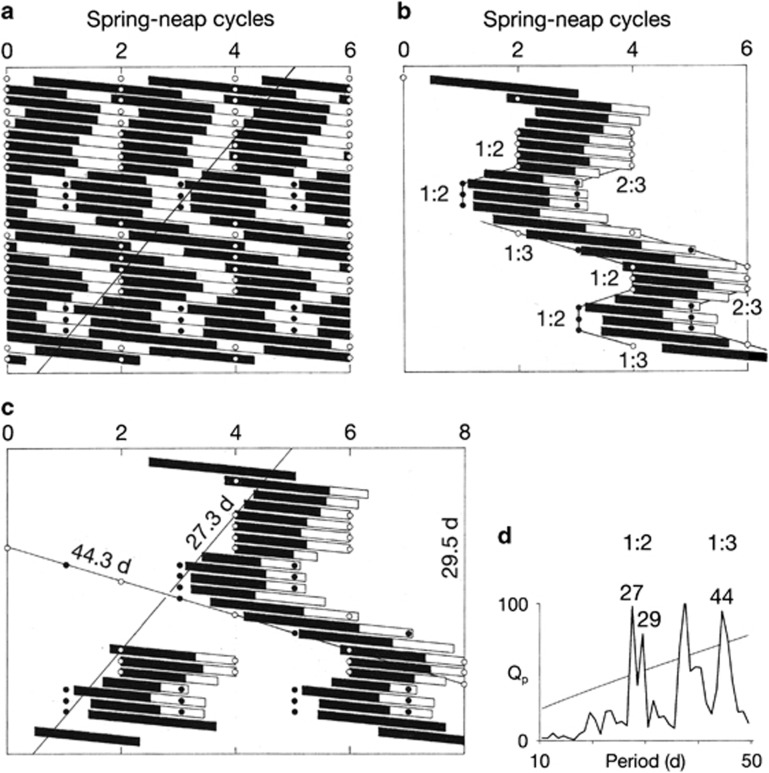Figure 7.
Bipolar mood cycles entrained simultaneously to both the declination cycle and the spring–neap cycle. Raster triple-plot of Patient 8’s mood cycles constructed with plotting intervals equal to two 14.8-day spring–neap cycles (a). Open and closed circles indicate selected times of occurrence of full-moon and new-moon peaks of the 14.8-day spring–neap cycle. Diagonal line indicates the transits across the plotting space of 27.3-day recurrences of every second peak of the 13.7-day declination cycle. Sequences in which mood cycles are vertically aligned indicate that they had become synchronous with every second spring–neap cycle. A sequence of successive individual manic-depressive cycles (b) extracted from the raster-plot (a) shows the path of their course across the plotting space. As they progress, the mood cycles shift among different modes of coupling with the spring–neap cycle. The sequence 1:2–2:3-1:2–1:3, which occurs over the course of one lunar year, is repeated exactly over the course of the subsequent lunar year. With these shifts, the mood cycles maintain relatively consistent phase-relationships with each of the bi-weekly lunar cycles, as shown by lines and circles (c). The 27.3-day line indicates times of recurrence of peaks of every second declination cycle. The 44.3-day line indicates times of recurrence of peaks of every third spring–neap cycle. The 29.5-day sequences of circles indicate times of recurrence of peaks of every second spring–neap cycle. The presence of all three periodicities in the course of the mood cycles is confirmed by χ2 periodogram analysis (d).

